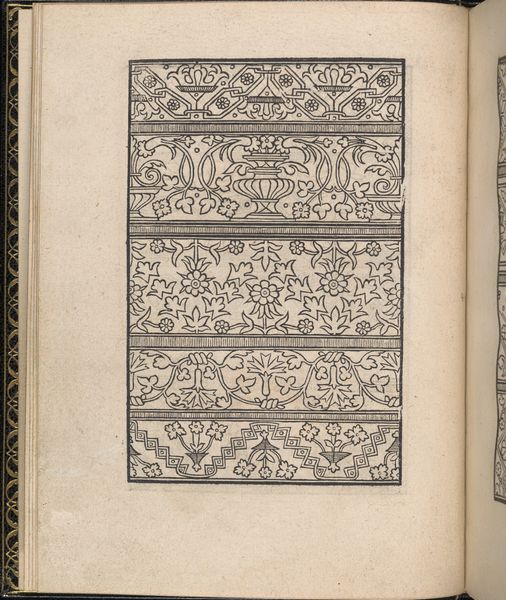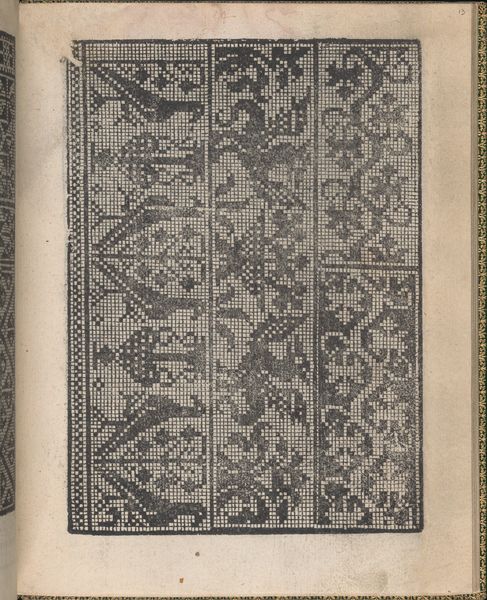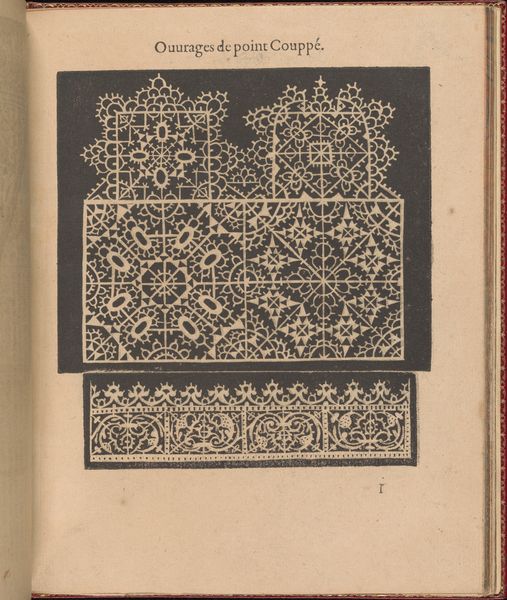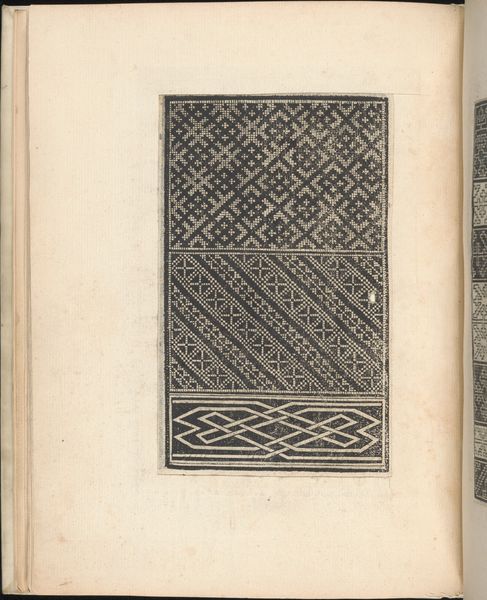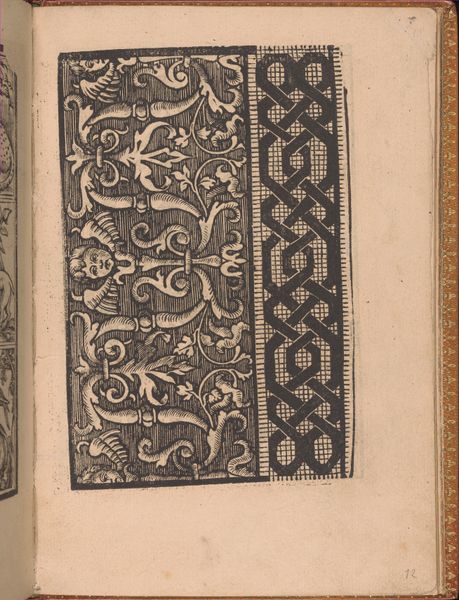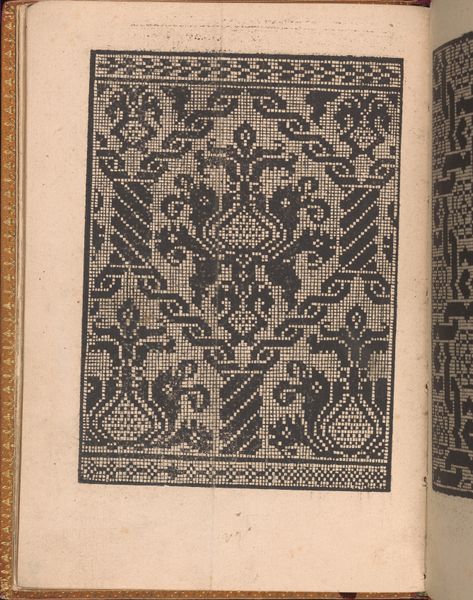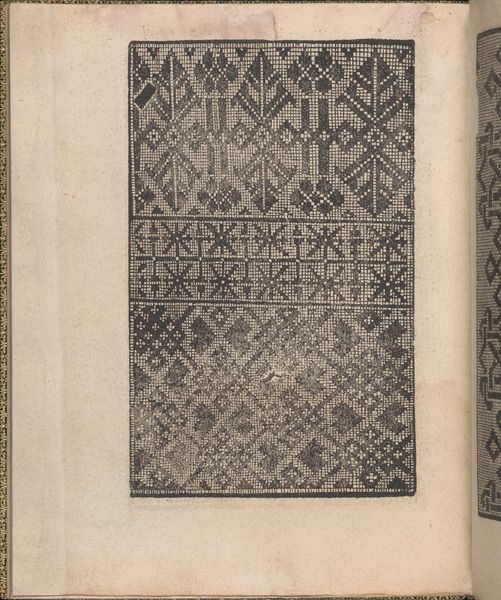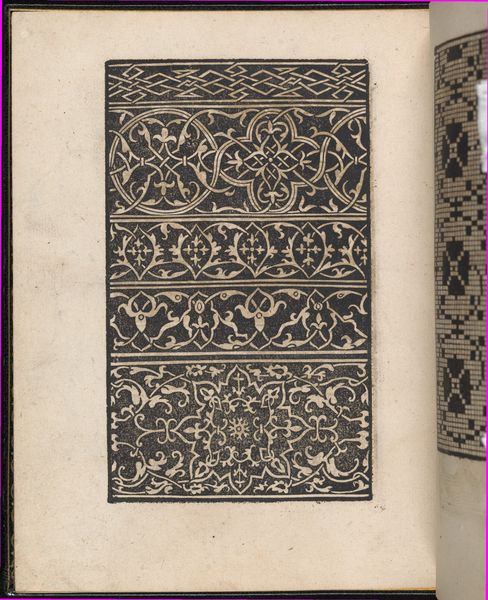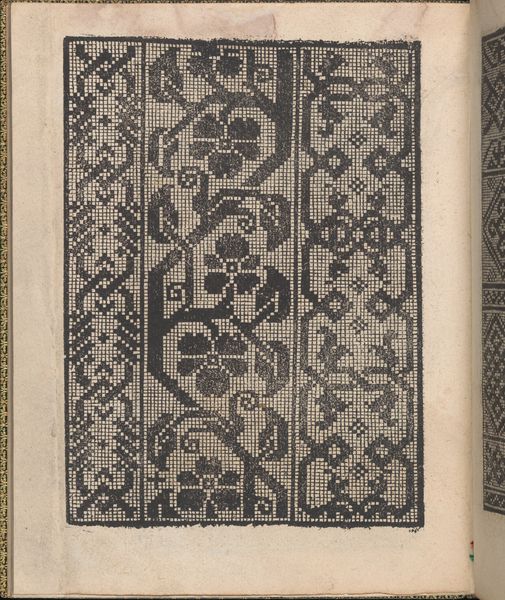
Twee stroken 16de-eeuws Duits kant en twee stroken 16de-eeuws Italiaans kant, uit de collectie van het Kunstgewerbemuseum in Dresden 1888
0:00
0:00
graphic-art, print, etching
#
graphic-art
#
medieval
# print
#
etching
#
11_renaissance
#
decorative-art
Dimensions: height 352 mm, width 256 mm
Copyright: Rijks Museum: Open Domain
Curator: This print from 1888 showcases two strips of 16th-century German lace alongside two strips of 16th-century Italian lace, all part of the Kunstgewerbemuseum's collection in Dresden. Editor: My first impression is that there is a striking graphic quality; each fragment feels like its own dense, ornamental world, with complex layers creating an overall sense of visual opulence. Curator: Absolutely. This artwork, part of the Rijksmuseum's holdings, highlights the contrast in craftsmanship from different regions during the Renaissance. These intricate patterns were originally created using fine threads and needles. Can you imagine the intense labour it took to produce just one strip? Editor: Exactly! The time and skill invested in such detailed work speak volumes. Who wore these adornments, and what kind of social signal was being sent by embellishing their garments this way? And importantly, how accessible would this level of decoration be based on social class and wealth? Curator: Precisely. The acquisition and display of these items in a museum reflect shifting social values and priorities. Museums played a huge role in promoting national identity and demonstrating cultural accomplishment. How do you interpret that context through its patterns? Editor: Looking closer, there is dense floral decoration in the German examples. These lace fragments acted as status symbols. With the rise of industrialization, this craft and labor began to transform in value, with machine-made imitations emerging and devaluing the intricate skill of original lacemakers. Curator: It's compelling to consider how these once-treasured objects transformed into museum artifacts representing an era of meticulous handicraft. These historical processes can be understood by what objects are chosen to display in these contexts. Editor: It brings to life the changing perception of craft and labour in the modern era. We are now looking back at historical processes of manual construction as a lost art. Curator: This makes you consider our relationship with materiality. Today, we tend to interact mostly with materials that are industrialized, in opposition to interacting with craft materials. Editor: Definitely a lot to take in for a few strips of lace, so to speak. Thanks! Curator: A pleasure. Until next time.
Comments
No comments
Be the first to comment and join the conversation on the ultimate creative platform.
